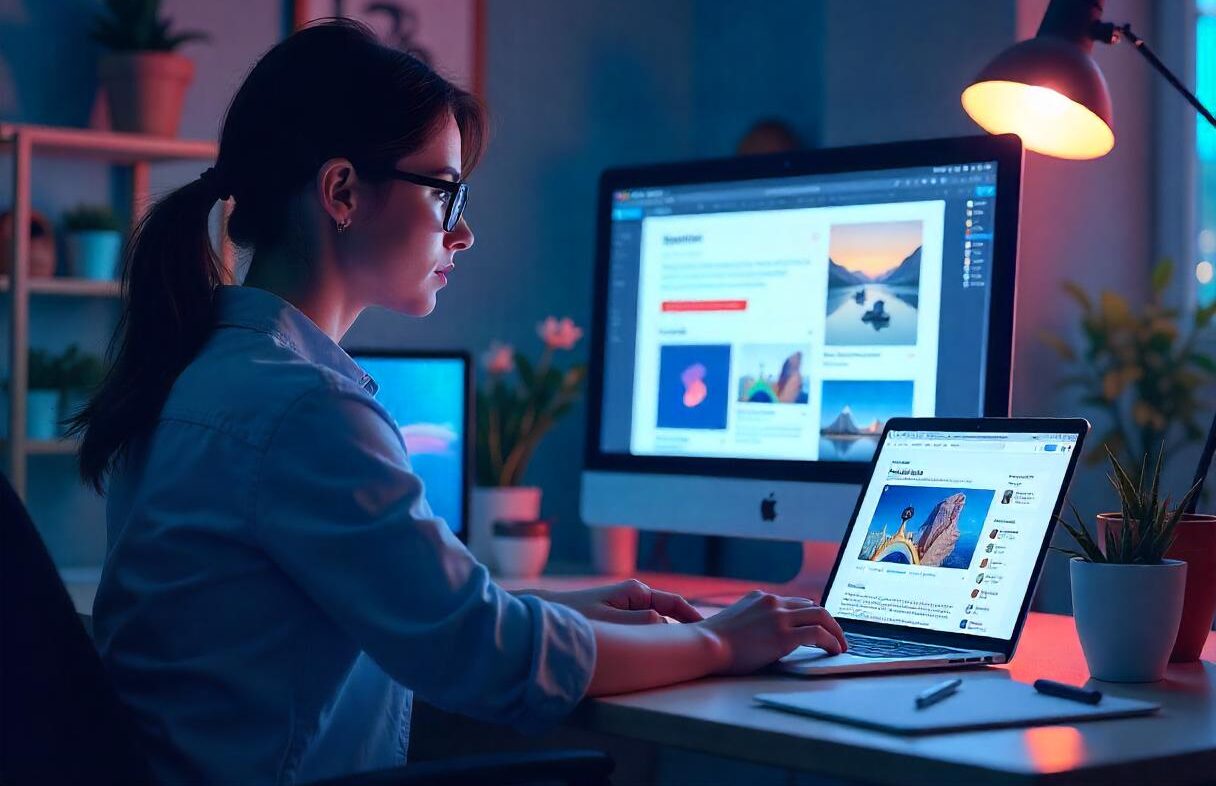Designing for Gen Z: Aesthetic Shifts and Creative Trends in 2025
By Trupti on 14 Jul 2025
Designing for Gen Z means creating with purpose, speed, and cultural fluency. As the world’s largest consumer group, Gen Z has real spending power—and even higher standards. They grew up swiping, scrolling, and instantly tuning out anything that feels outdated. If you want their attention in 2025, your design must match their pace, speak their visual language, and feel as dynamic as their group chats.
1. From Perfect to Perfectly Unpolished
- Soft grain, visible texture. Photos look like film or an old phone cam. Tools like RetroSupply help recreate that look.
- Imperfect grids. Elements overlap, margins breathe, layout feels less “template.”
- Handwritten layers. Doodles, arrows, and margin notes add personality.
Tip: Drop the glossy 3D mockup and show a quick phone shot of a prototype with scribbles on it. Feels honest, shares the process, wins trust.
2. Color: “Muted Neon” & Tech Pastels
- Lavender‑blue, dusty lime, sunset coral. Try experimenting on Coolors.
- Gradients that fade into near‑white, not pure black.
- Dark‑mode palettes swap pitch black for charcoal or deep navy to spare tired eyes.
Use these tones in UI states, merch drops, and social slides. Keep backgrounds light; let accents pop.
3. Type: Big, Bold, but Friendly
- Headlines can fill half the screen on mobile.
- Mix a bulky display font with a clean sans‑serif for body text.
- Rounded corners on letterforms feel more approachable.
Avoid ultra‑condensed styles that shrink on small screens. Explore expressive fonts via Fontshare or Velvetyne.
4. Motion: Tiny Nudges, Not Hollywood
- Micro‑interactions: a cheeky bounce, a 100 ms color flick.
- Scroll‑tied reveals: sections glide in as thumbs move.
- Tap feedback: a button ripples or tilts 1° on press.
Try LottieFiles for smooth, lightweight motion assets.
5. Content Blocks: Snackable, Stackable
- Break text with sub‑heads every 2–3 lines.
- Use emoji bullets sparingly (one per list max).
- Carousels outperform long captions—each slide one idea.
See this in action on Canva’s Instagram.
6. Vertical‑First Everything
- Keep key visuals inside a safe zone (top 70 %).
- Use captions burned in; many watch muted.
- Add subtle progress bars so viewers know length.
Design in 9:16 first. Studio by LinkedIn makes this easier than ever.
7. Collaborative Creation
- Offer editable templates via Figma Community.
- Launch “build‑with‑us” challenges: share raw files, invite tweaks.
- Showcase community remixes on your channels.
Co‑ownership deepens loyalty and sparks organic reach.
8. Nostalgic Tech Cues
- Pixel cursors, glossy buttons, chat‑box bubbles.
- Sticker sheets styled like Windows 98 icons.
- Subtle skeuomorphic shadows (1–2 px) for depth.
Need inspiration? Browse Neo‑Brutalism.io.
9. Inclusive by Default
- Use gender‑neutral copy (“team” vs. “guys”).
- Choose stock photos that show varied bodies and abilities.
- Provide dark‑mode, alt text, and captions—always.
Follow W3C Accessibility Guidelines to make sure you’re covered.
10. Eco‑Aesthetic & Digital Sustainability
- Earth‑tone variants mixed with vibrant accents = “bright green” look.
- Motion graphics under 1 MB to cut data use.
- Re‑usable packaging mockups: show return loops or refill cues.
Read more in Branch Magazine, the digital sustainability zine.
11. Meme‑Ready Elements
- Blank sign boards, chat bubbles, label stickers.
- Leave negative space where users can add text.
- Use simple color fills so edits are easy.
Memes spread ideas faster than ads—build assets meant to be re‑captioned.
12. Audio‑On Moments
- Short stingers tied to brand motion marks.
- Lo‑fi loops behind tutorial clips.
- Voice filters for branded AR effects.
Pair with Mixkit or Epidemic Sound.
13. AR Filters & Lightweight 3D
- Use flat shading, limited polys.
- Trigger effects with simple face gestures.
- Add branded Easter eggs.
Use Spark AR Studio or Lens Studio to build yours.
14. Data‑Driven Personalization
- Dashboards that greet users by name.
- Product pages that auto‑adapt themes.
- Personalized GIFs in email campaigns.
Use tools like Dynamic Yield or Mutiny.
15. Micro‑Community Targeting
- Tailor creative to each niche.
- Use creator networks like Influenster or Upfluence.
- Run A/B tests on color palettes, tone, and emoji use.
Gen Z hangs out in niche corners—K‑pop edits, cottage‑core, alt‑finance memes.
16. Campaigns as Seasons, Not Events
- Week 1: cryptic assets
- Week 2: partial reveals
- Week 3: full drop
- Week 4: behind‑the‑scenes
Build anticipation, reward engagement.
17. Real‑Time Feedback Loops
- Use polls on Instagram Stories, YouTube Community, or Discord.
- Host Figma Live Jams with public input.
- Turn top comments into new visuals or mini campaigns.
Gen Z expects to be heard—build loops that listen.
18. Security & Subtle Verification
- Lock icons, last‑login times, masked emails.
- Add hCaptcha to forms for an extra layer of security.
Scam awareness is high. Subtle signals help.
19. Short‑Form Case Studies
- 3 slides: problem > solution > outcome
- Use Reels, TikToks, or LinkedIn Carousels
- Invite DMs for more
Proof > pitch—keep it concise.
20. Designer Takeaway Checklist
- Audit vibe
- Design vertical‑first
- Limit gloss, add grain
- Caption your audio
- Share open source design files
- Test, tweak, repeat
Final Word
Designing for Gen Z in 2025 means less polish, more presence. Realness beats perfection. Co‑creation beats control. And curiosity wins every time.
Stay flexible. Stay plugged in. Keep it weird.
Gen Z will notice—and engage.
Join Our Mail List
To get latest updates on courses and news regarding education.